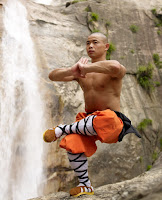What's the biggest fitness mistake I see most people making? Is it isolating their muscles instead of training the whole body? Could it be not warming up correctly? How about outdated and dangerous exercises like crunches? The truth is, while these are all big problems, I wouldn't classify them as the biggest fundamental problem I see with most fitness programs. The biggest mistake the average person makes with their fitness routine is ...
They don't make it portable!
The BIGGEST excuse for not working out sounds something like "I didn't have access to a gym" or "I was stuck in a hotel all weekend and it didn't have weights". They might not be these exact excuses, but I'm sure you get the point - In order for the average person to be successful with their fitness program, it must be portable!
The struggle for most people is finding a way to fit their training into their life. If you're always on the go (traveling, family, social obligations) it can be tough to make it to the gym. You might miss a workout here and there, eventually that turns into a week of missed workouts. Before you know it you haven't been to the gym in months and eventually you just stop going. How often do we have friends who have been in that exact situation? How often has that friend been you? It's ok, it happens! But you need to learn from the mistake. You need to make your fitness program fit into your life in order to make sure that never happens again!
If you're program is based around minimal/portable equipment & bodyweight workouts you'll have your "gym" with you anywhere you go! You can literally fit everything you need, to get a great workout, into a small bag and take it with you anywhere you go. Get yourself a suspension trainer, lacrosse ball, and a few resistance bands. That's all you need! If you have a knowledge of bodyweight training and some resistance bands, you can literally get a world class training session done anywhere in the world. It's that simple!
Exercises like joint mobility, hip thrusters, push ups, squats, rows, chin ups, and hinges can all be done with little to no equipment. They're also easily regressed or progressed to fit the needs of any trainee. They can be paired to help develop strength or used to improve conditioning, and they can performed anywhere at anytime. There's simply no excuse for missing your workouts due to traveling or lack of access to a traditional gym.
You should never allow yourself to become dependent on the gym or a set of weights. In order to ensure life long fitness, you must free yourself from those self imposed "shackles" and take responsibility for your fitness. If you're always married to the idea that you need a set of weights or a gym, then you're placing limitations on your fitness. You're creating a road block that doesn't need to be there. Learning how to train on the go and how to workout in less than ideal settings is a must for everyone. When it comes to fitness, long term consistency trumps short term intensity. Being able train anywhere with little to no equipment will be key to your consistency and success.
- Tim
www.TimothyBellFitness.com






























